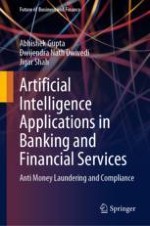This book discusses all aspects of money laundering, starting from traditional approach to financial crimes to artificial intelligence-enabled solutions. It also discusses the regulators approach to curb financial crimes and how syndication among financial institutions can create a robust ecosystem for monitoring and managing financial crimes. It opens with an introduction to financial crimes for a financial institution, the context of financial crimes, and its various participants. Various types of money laundering, terrorist financing, and dealing with watch list entities are also part of the discussion. Through its twelve chapters, the book provides an overview of ways in which financial institutions deal with financial crimes; various IT solutions for monitoring and managing financial crimes; data organization and governance in the financial crimes context; machine learning and artificial intelligence (AI) in financial crimes; customer-level transaction monitoring system; machine learning-driven alert optimization; AML investigation; bias and ethical pitfalls in machine learning; and enterprise-level AI-driven Financial Crime Investigation (FCI) unit. There is also an Appendix which contains a detailed review of various data sciences approaches that are popular among practitioners.
The book discusses each topic through real-life experiences. It also leverages the experience of Chief Compliance Officers of some large organizations to showcase real challenges that heads of large organizations face while dealing with this sensitive topic. It thus delivers a hands-on guide for setting up, managing, and transforming into a best-in-class financial crimes management unit. It is thus an invaluable resource for researchers, students, corporates, and industry watchers alike.
